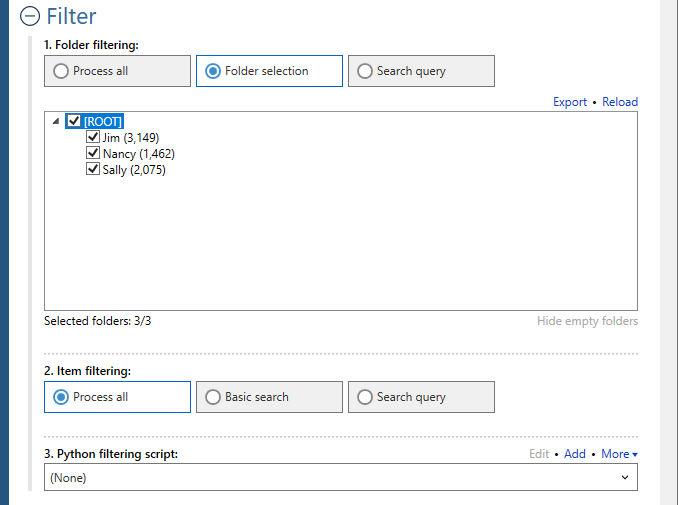Welcome to Fookes Software’s support portal
How to convert PST to Mbox (without data loss)
Aid4Mail is the best PST to Mbox converter software on the market. Compared to competing tools:
- Aid4Mail is faster.
- More accurate with no data loss.
- Offers more control over the conversion process.
If you don’t have Aid4Mail yet, you can use the free trial version or purchase a low-cost 1-month Aid4Mail Converter license. If you’re an eDiscovery or digital forensics professional, Aid4Mail offers powerful features beyond simple email conversion that can greatly benefit your work. Our Email eDiscovery Software and Email Forensics Software pages provide in-depth information on how Aid4Mail can streamline your eDiscovery projects and enhance your forensic email investigations with advanced search capabilities, metadata preservation, and more. We encourage you to explore these pages to learn how Aid4Mail can be an invaluable tool in your professional toolkit.
Aid4Mail can convert your mail from a PST file with or without Microsoft Outlook installed. However, you will get better performance when Outlook is present and existing email status information (unread, read, replied, flagged, …) will be preserved. Aid4Mail can also faithfully restore your folder structure.
Please follow the steps below to convert mail from a PST file to mbox with Aid4Mail. For any setting that’s not specifically mentioned, you can either use the default (preset) value or consult the Aid4Mail User Guide for details. You can open it from Aid4Mail by pressing the F1 key.
Step 1: Open Aid4Mail’s settings
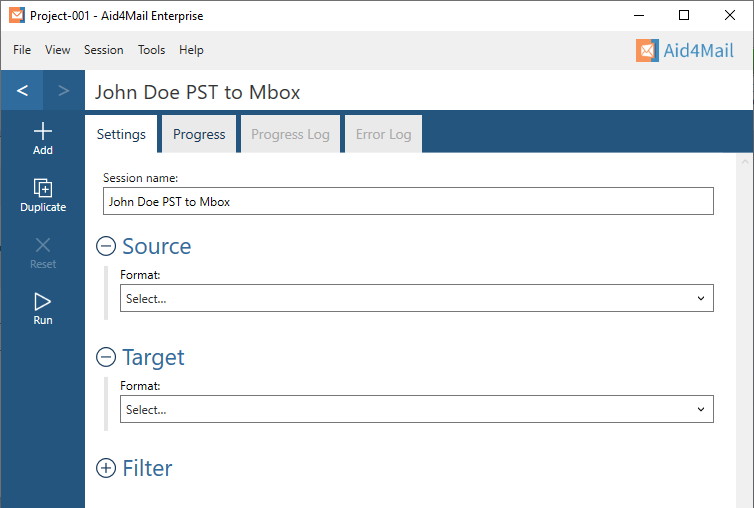
- In Aid4Mail, select the Settings tab.
- Update the Session name so it describes the task at hand. In this example, we will be converting John Doe’s PST file to mbox so we’ve entered John Doe PST to Mbox as the session name.
- Below the session name there are three sections: Source, Target and Filter. Each can be displayed or hidden by selecting the +/- symbol next to the section heading. This tutorial requires them all to be displayed.
Step 2: Set a PST file as your source
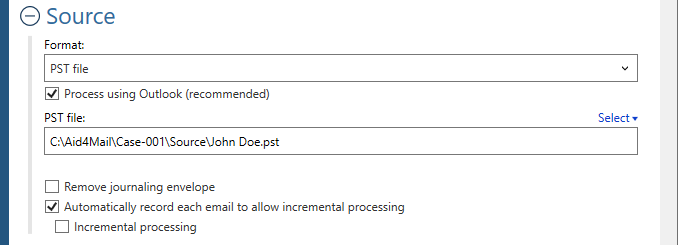
- In the Format list, select PST file.
- Choose whether to Process using Outlook. This means using Outlook’s internal engine (MAPI) to collect the PST file. Using Outlook’s engine is faster, and provides access to more email metadata, but requires Outlook to be installed on the same computer as Aid4Mail. If you don’t have Outlook installed, keep this option off.
- Specify the location of your PST file. You can write it directly in the field or use the Select button to browse your file system. You can also specify the file’s Password if required.
- Choose whether to Remove journaling envelope if your email files are journaled.
Step 3: Set Mbox files as your target
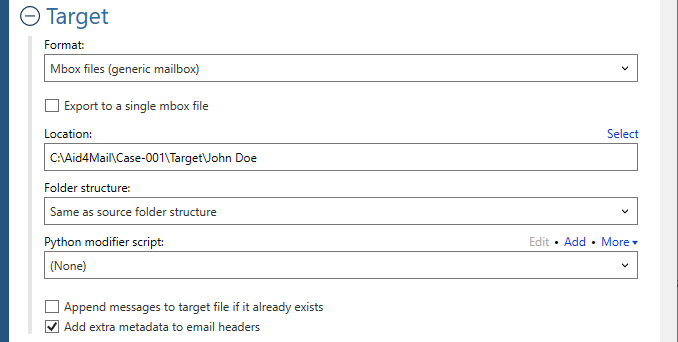
- In the Format list, select Mbox files (generic mailbox).
- Choose whether to Export to a single mbox file, or create one mbox file for every mail folder.
- Set the Location where you want your mbox file(s) to be saved. You can write directly in the field or use the Select button to browse your file system. If you’re exporting to a single mbox file, set a file name (with or without an extension), otherwise set a directory location.
- Select an option for the Folder structure of the exported mail. Usually you’ll want to keep it the same as the original, so choose Same as source folder structure.
- If you want to add to existing mbox files, choose Append messages to target file if it already exists.
- Add extra metadata to email headers when your chosen target format or settings would otherwise result in data loss. For example, if the target format doesn’t support some of the source format’s header fields. Or if the original folder structure would be lost due to your settings. With this option, the data is not lost but instead added to the email headers.
Step 4: Set your filter (optional)
- Under Folder filtering, pick Folder selection. Your PST folder structure will appear in the box below.
- Select the folders you want Aid4Mail to process. The others will be skipped.
Step 5: Run your PST to Mbox conversion
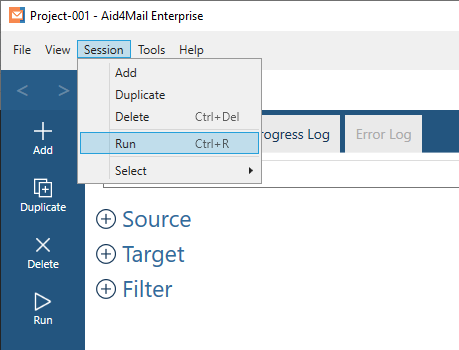
Select the Run button or Session > Run from the menu. Aid4Mail will convert your PST file to mbox. It will automatically open the Progress tab so you can monitor what’s going on. Once finished, you will find full reports in the Progress log and, if relevant, the Error log.
That’s it!
We hope you found this tutorial helpful.
If you’re looking for further information, first take a look through the Aid4Mail user guide and our knowledge base articles.
If you still have questions about how to convert PST to Mbox, don’t hesitate to contact our award-winning Helpdesk.
If you’d like to buy an Aid4Mail license, please visit the online store.
Or if you’d like to try Aid4Mail first before purchasing, download a free trial and run your own tests. We want you to have full confidence in Aid4Mail!
